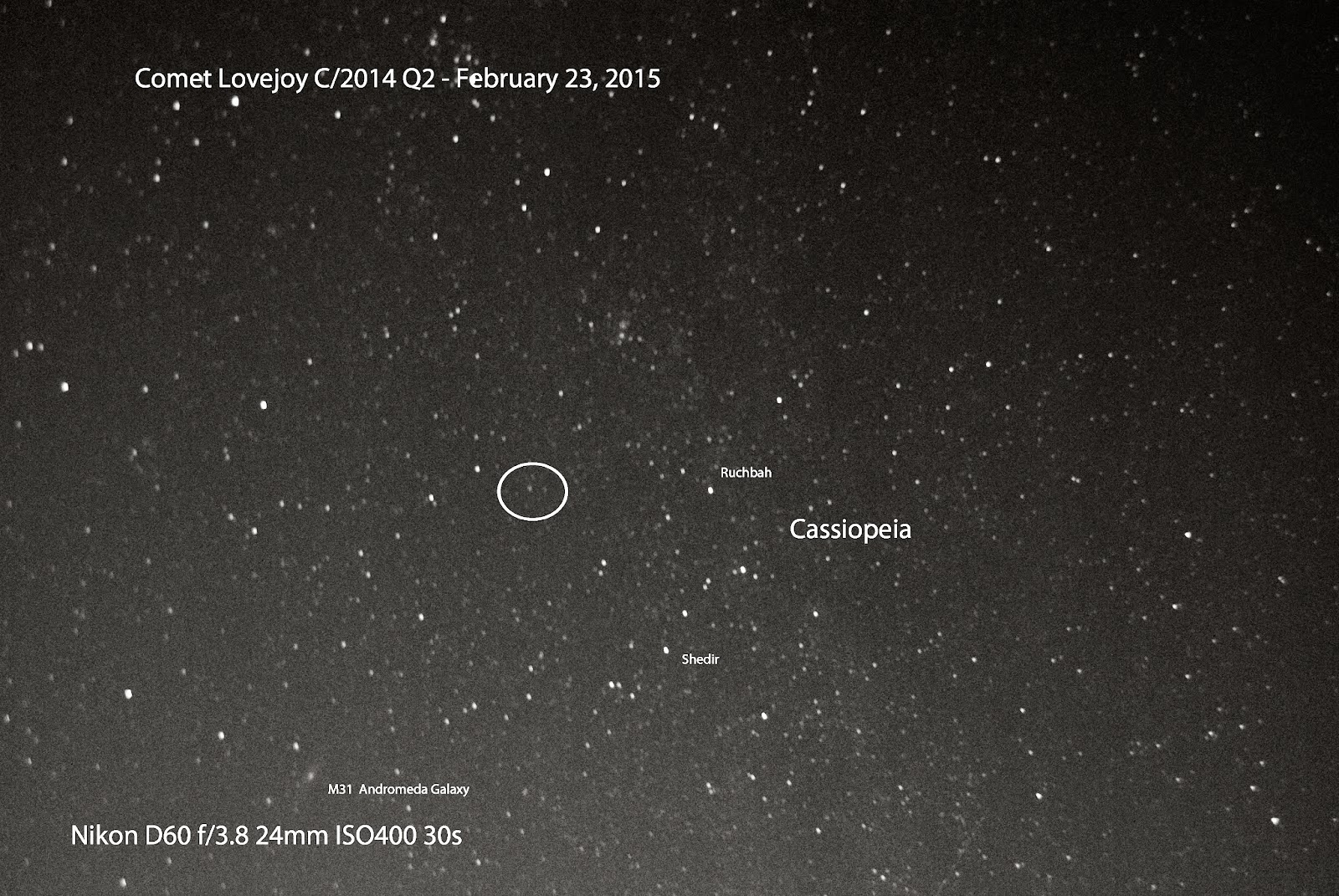The most luminous quasar (quasi stellar radio sources) currently known is reported in the latest version of Nature.
At the "borders" of the universe, 12.8 billion light years from earth, only 900 million years after the big bang this Quaser was formed. The massive black hole has a mass of 12 billion solar mass. It's not the most massive one (cfr 39 billion solar mass) but in comparison with the black hole in our milky way of 4.1 million solar mass, it's gigantic.
Pascal Hilkens Astro Home Page
Saturday, February 28, 2015
Monday, February 23, 2015
Comet Lovejoy C/2014 Q2
Comet Lovejoy C/2014 Q2 can still be seen in constellation Perseus near Cassiopeia. Estimated magnitude 6.
Venus and Mars at the evening sky
Saturday, February 21, 2015
Venus and Mars at the evening sky
The weather conditions are far from ideal with the upcoming fog. I was able to oberve both Mars and Venus at the evening sky 1h after sunset and low in the West. The next days both Mars and Venus will be closer at the sky - hopefully we can observe this as weather forecast doens't look good.
Tuesday, February 17, 2015
Sunspot 2282
Sunspot 2282, February 15, 2015. Using my Orion XT12 with Barlow x2 and Nikon D60 in ISO 200 and ISO 400. Intensive modification using CS4.
Sunday, February 15, 2015
Update Cumulus
March 20th, Partial Suneclips
33 days to go and we can witness a partial suneclips. It all starts in the early morning of march, 20th. The moon will hit the suns surface around 9h28 local MET. Maximum of 81% is foreseen around 10h35 and ends at 11h46.
See also Eclips 2015
See also Eclips 2015
Subscribe to:
Posts (Atom)






